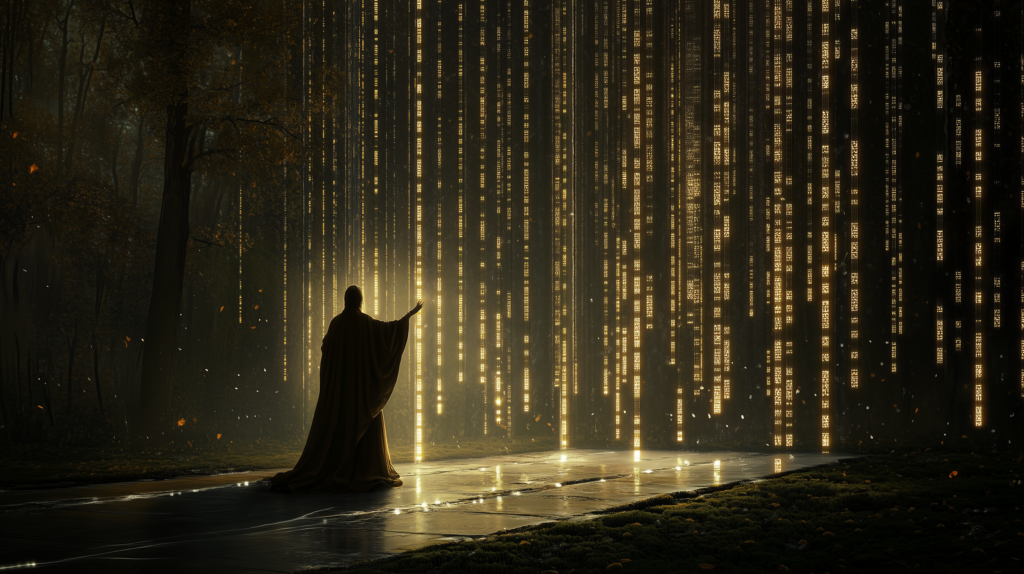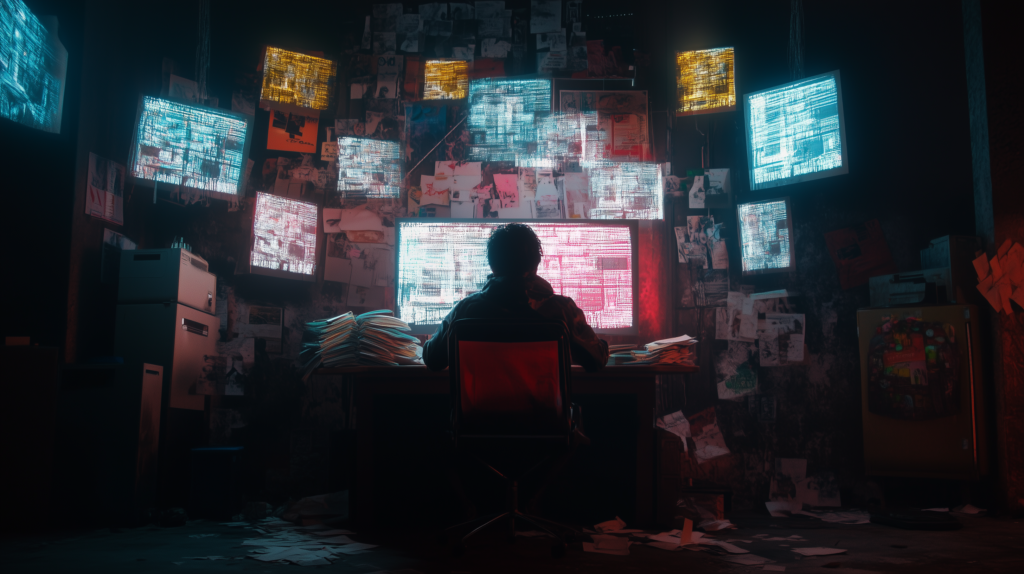
Por Márcia do Vales
After spending almost three months with my social media accounts deactivated, I deeply reflected on how this break influenced my perspective on the digital world. During this time, I realized that being disconnected was not just a digital pause but a chance to truly be present. From preparing a cup of coffee mindfully to enjoying simple conversations, I noticed how small moments can bring peace and happiness. This reminded me of the tattoo my son has on his neck: “Here and Now”, a phrase that expresses the challenge and importance of fully living in the present in a world full of digital distractions.
Reflecting on this, I realized how social media, by keeping us constantly connected, can actually pull us away from the present. This phrase inspired me to value the present moment more and cultivate a more mindful presence. Research, such as that conducted by the American Psychological Association (2018), shows that the impact of social media on well-being can vary significantly. This reinforces the importance of using it consciously, prioritizing genuine interactions to enjoy its benefits and avoid its challenges.
These reflections led me to identify different ways people interact with the digital world. Here, I highlight three profiles that illustrate these behaviors, along with the challenges and opportunities associated with each.

Type 1: The Connected Extrovert – Master of Social Connections
This profile represents a highly sociable person with a life full of real-world interactions. Usually, it’s someone who meets people daily, whether for professional or personal reasons. They are deeply engaged with the material and physical world, which brings balance to their relationship with social media.
For this person, social media is seen as a tool to strengthen relationships and expand opportunities. Studies suggest that face-to-face social interactions increase levels of oxytocin and serotonin, hormones associated with well-being and emotional resilience, providing a foundation for extroverts to use digital platforms more constructively, such as for professional networking or maintaining real-life connections. Social media allows them to promote themselves, showcase their work, and reinforce relationships already established in the physical world.
Because they have a life rich in in-person interactions, the negative impacts of social media, such as social comparisons or emotional dependence, are less intense. This person is better able to separate the “virtual world” from the “real world.”
For example, extroverts can use social media to broaden their professional network by participating in online events, connecting with colleagues from different sectors, and even finding mentorship opportunities or work collaborations. In times of less in-person interaction, they might turn to social media as an alternative to maintain connections, often resulting in interactions that are more superficial and less satisfying.
Moreover, the pressure to maintain a constant presence on social media can manifest in quickly responding to messages or posting regularly to meet social or professional expectations. This cycle often leads to digital exhaustion, showing that even extroverts need to be mindful of balancing their online and offline lives.

Type 2: The Creative Introvert – A Universe of Ideas
This profile represents a more reserved individual with a calm social life and an appreciation for their own company. Typically, these are people who devote themselves to introspective activities, such as art, writing, or academic research. Individual athletes can also identify with this profile, using their journeys to explore limits and achieve personal goals, whether training alone or in groups.
For these individuals, social media presents both opportunities and challenges. It allows them to share ideas, connect with like-minded communities, and showcase projects or accomplishments. For example, a painter might post their work and receive constructive feedback, while an amateur athlete might share their progress and find support in dedicated groups.
Platforms like Instagram can be inspiring but also frustrating. Imagine a writer who finds motivation from receiving praise in an online group, a musician who shares their compositions and gets positive feedback, or a visual artist who displays their works in search of connection. However, when comparing themselves to highly curated influencers, many end up feeling pressured and insecure about their own work. This constant exposure can lead to insecurity and creative blocks.
Despite this, these digital environments often act as support networks where creatives can exchange experiences and learn from one another. The biggest challenge is avoiding distractions and the lure of instant gratification, which can divert attention from deeper, more meaningful projects.
Practical strategies include:
- Setting specific times to create or practice without digital interruptions.
- Limiting content consumption that fosters comparisons and prioritizing sources of inspiration.
- Joining communities that encourage genuine exchanges and mutual support.
By adopting these practices, creative introverts can transform social media into a tool for growth and connection without compromising their confidence or creativity.

Type 3: The Explorer with Focus Challenges – Managing Digital Chaos
This profile describes individuals who face challenges related to concentration and organization, such as difficulty maintaining a stable routine, dealing with excessive stimuli, or navigating through the overload of digital information. This can include people with unique attention and organizational challenges, such as those with ADHD, dyslexia, or other profiles who find both opportunities and hurdles in social media.
The Type 3 relationship with social media is ambivalent. On one hand, these platforms can be a valuable source of learning and connection, allowing them to find supportive communities or share their discoveries and experiences. On the other hand, the digital environment —with its endless notifications, social comparisons, and constant stimuli— can intensify feelings of chaos and disorganization.
Platforms like Instagram and TikTok often trap these individuals in cycles of hyperfocus, dedicating hours to specific content, or dispersion, jumping from topic to topic without a clear objective. This dynamic can make time management difficult and lead to feelings of guilt or inadequacy, especially when comparing themselves to influencers who seem to “have it all together.”
A study from the Journal of Attention Disorders (2020) highlights that individuals with ADHD are more prone to excessive social media use due to their constant search for quick stimuli and difficulty regulating online time. To mitigate these effects, strategies such as using productivity apps and setting clear time limits for digital consumption can help create a more balanced relationship with social media.
Key challenges include:
- Constant distraction: The endless stream of content makes it hard to focus on priority tasks.
- Mental overload: The excess of information and notifications intensifies feelings of disorganization.
- Social comparison: Exposure to unrealistic productivity or success standards can increase self-criticism.
Despite these obstacles, individuals in this profile are resilient and adaptable. Often, they turn their online experiences into powerful tools to explore ideas, find solutions, and connect with others who share their interests.
Practical strategies include:
- Using productivity apps to organize tasks and limit time spent on social media.
- Creating a structured digital routine, reserving specific times for interactions and content consumption.
- Prioritizing meaningful interactions and filtering content that fosters comparisons or causes emotional strain.
These approaches help transform social media into a more functional and enriching environment, minimizing the negative impacts of excessive stimuli.

Final Reflection: The Balance We All Seek
These three types of people illustrate how our individual differences shape the way we interact with the digital world. Regardless of the profile —whether extroverted, introverted, or dealing with focus challenges— finding balance between the digital and physical realms is essential for our well-being. How do you balance these two dimensions in your life? Perhaps it’s time to rethink your habits and discover new ways to live the present more fully.
While social media has its negative impacts, it also offers opportunities for expression, learning, and connection. The University of California, Irvine (2016) demonstrated that controlled exposure to social media significantly improves focus and reduces stress levels, emphasizing the importance of regularly disconnecting. The key lies in conscious use: setting boundaries, prioritizing real interactions, and cultivating a healthy relationship with the digital world. Studies show that regular digital breaks can boost focus capacity by up to 40% (Journal of Digital Wellness, 2020).
Why not start by reserving one hour a day to disconnect and savor the present moment? Small changes can lead to great transformations.
Disconnecting from social media reminded me of Marshall McLuhan’s quote: “The tools we create end up recreating us.” During this pause, I realized how social media was shaping not only my choices but also my perception of time and priorities. Reconnecting with the physical world brought clarity: technology should be an ally, not our guide.
I invite you to reflect: Which of these profiles do you identify with most? What strategies do you use to balance your relationship with social media? Let’s continue this conversation and explore how to turn technology into an ally for our well-being.





